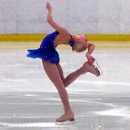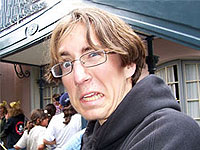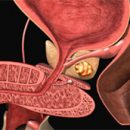Hypokinesia - restriction of mobility, due to lifestyle or long-term beddown in various diseases. What are the symptoms of this disease? Read more in the article.
Content
Hypokinesia - a forced decrease in the volume of arbitrary movements due to the nature of the work; Small mobility, insufficient human motor activity. The introduction of scientific and technological progress in production led to the redistribution of the load from large muscular groups on the small muscles of the shoulder and the forearm and the reason for the decline in total motor activity in the production of professional hypocineesia. There were professional groups that perform work in a low-voltage working position. Studies of the physical condition of people «Low-moving» Professions showed that their physical performance is significantly reduced compared to people engaged in physical culture and sports.
 Effective reception to determine the volume of motor activity is to count the number of human steps for the work shift and per day - both in the workers and on weekends, as well as the counting of Energotrat. Workers «Low-moving» Professions make a working shift 2008-2299 steps, spending 801-879 kcal or 1.79-1.83 kcal / min. During the day on weekday, the number of steps is 8023-10 193, and on weekends 8928-11 590 with energy generators 2195 kcal and 2698 kcal, respectively. These evidence suggests that in terms of engine activity, the examined persons are at the lower border «Norma», characteristic of lung physical labor workers. Lack of motor activity on working days is not compensated in the free time, on weekends.
Effective reception to determine the volume of motor activity is to count the number of human steps for the work shift and per day - both in the workers and on weekends, as well as the counting of Energotrat. Workers «Low-moving» Professions make a working shift 2008-2299 steps, spending 801-879 kcal or 1.79-1.83 kcal / min. During the day on weekday, the number of steps is 8023-10 193, and on weekends 8928-11 590 with energy generators 2195 kcal and 2698 kcal, respectively. These evidence suggests that in terms of engine activity, the examined persons are at the lower border «Norma», characteristic of lung physical labor workers. Lack of motor activity on working days is not compensated in the free time, on weekends.
Hypokinesia is one of the risk factors for pathological changes in the human body: diseases of the cardiovascular system, obesity and disorders of the musculoskeletal system. Among the most dangerous consequences of a small motor activity of a person, disturbances in the cardiovascular system. In persons working under hypocinezia, there is an increase in heart rate (heart rate) at rest by 20%, reducing the contractile function of the heart muscle and the speed of its relaxation, the deterioration of the heart rhythm regulation. Heart adaptation to muscle loads occurs mainly due to an increase in the heart rate with a relatively small increase in blood systolic volume, which is regarded as an uneconomical reaction that contributes to the rapid depletion of the functional reserve of the heart and having an adverse prognostic value in the development of diseases of the cardiovascular system.
The development of fatigue depends on the level of physical fitness of man. At the end of the work shift, there are: an increase in the latent period of a simple visual and engine response in persons with a high and low level of general physical performance by 7 and 19%, respectively compared to initial values (to work); reducing the rate of information processing - by 10 and 21%; Reducing the endurance of the muscles of the brush - by 11 and 27%; Reducing the sustainability of a clear vision - by 9 and 16%. The marked shifts of physiological functions throughout the shift indicate the developing fatigue of the body of the employee, the depth and the degree of severity of which are much more in persons with low levels of physical fitness.
Professional hypocinezia significantly aggravates the effect on the human body DR. Labor factors, such as neuro-emotional voltage and monotony. Negative emotions acquire a pronounced intensity and nature of stress. Against the background of reducing emotional stability to stress-agent factors, negative emotions are hardening for humans. Hypokinesia in combination with a high level of neuro-emotional stress may cause a breakdown of adaptation reactions of a person. One of the effective means of increasing the ability to resist psycho-emotional tension should be improving physical activity.
For persons with low physical fitness, classes are required for 30-40 minutes 4-5 times a week within 10-12 months. For persons with an average level of physical fitness, it is advisable to occupies for 20-30 minutes 3 times a week for 8-10 months. For persons with a high level of physical fitness, classes are possible for 10-15 min 1-2 times a week.
In order to compensate for insufficient motor activity:
- Production gymnastics;
- Group classes of preventive orientation in the working day mode (regulated and lunch breaks);
- Individual classes on exercise bikes in the working day mode and in its free time;
- Group classes of restoration and prophylactic orientation after the working day and on weekends;
- Independent classes - Running, skiing, swimming, etc.
In some cases, this state leads to hypodynamics.









